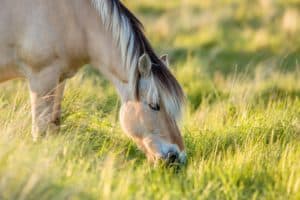Diagnosing and Treating Equine Glaucoma
- Topics: Article, Other Eye Problems
Editor’s Note: This article is part of TheHorse.com’s ongoing coverage of topics presented at the 2012 American Association of Equine Practitioners’ Focus on Ophthalmology conference, held Sept. 6-8 in Raleigh, N.C.
Although it shares the same name, equine glaucoma is a different animal than human glaucoma, and the variations between the two could be one reason the disease is not commonly recognized and treated in horses, one veterinarian suggested.
At the 2012 American Association of Equine Practitioners’ Focus on Ophthalmology conference, held Sept. 6-8 in Raleigh, N.C., Brian Gilger, DVM, MS, Dipl. ACVO, professor of ophthalmology at the North Carolina State University College of Veterinary Medicine, reviewed the proper diagnostics and treatments for equine glaucoma.
Horses, Gilger noted, tend to tolerate glaucoma better than some other species. The term glaucoma, he explained, describes "increased ocular pressure to a level that is incompatible with the health of the eye." In the normal eye aqueous humor ebbs and flows, and the body regulates this so that pressure remains steady. An abnormally developed outflow pathway, or drain, in an eye with no other ocular deficits can decrease outflow, causing pressure to build (called primary glaucoma). Alternately, damage to the drain, such as scarring, debris accumulation, or vascularization due to ocular disease such as equine recurrent uveitis, can cause secondary glaucoma
Create a free account with TheHorse.com to view this content.
TheHorse.com is home to thousands of free articles about horse health care. In order to access some of our exclusive free content, you must be signed into TheHorse.com.
Start your free account today!
Already have an account?
and continue reading.

Written by:
Erica Larson
Related Articles
Stay on top of the most recent Horse Health news with



















